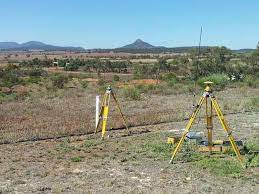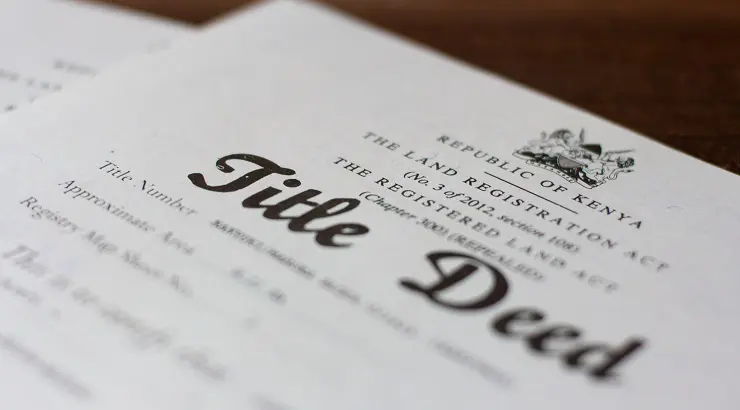How to Conduct a Land Search in Kenya
Learn how to perform a land search in Kenya using online and manual methods. Verify land ownership, check encumbrances, and secure your property investment with this step-by-step guide.
Introduction
Conducting a land search in Kenya is a vital step for anyone planning to buy or invest in property. It ensures that the land you intend to purchase is legally owned and free from disputes or claims. With platforms like Ardhisasa and traditional registry offices, the process has become more accessible and efficient. Understanding how to conduct a proper land search in Kenya protects you from potential legal complications and financial losses. This guide will walk you through every step, from identifying the land to interpreting search results.

Understanding Land Ownership in Kenya
Before conducting a land search, it’s essential to understand how land ownership works in Kenya. The legal framework and types of tenure influence how land can be bought, sold, or verified. Knowing these details will help you navigate searches more effectively and make informed decisions.
Types of Land Tenure in Kenya
Kenya has two main land tenure systems: freehold and leasehold. Freehold grants indefinite ownership, giving the owner permanent rights to the land. Leasehold, on the other hand, is time-bound, usually ranging from 33 to 99 years, after which the land may revert to the government. Some other forms include community land and trust land, each with unique ownership rights.

Legal Framework Governing Land Ownership
Land in Kenya is governed by laws such as the Land Registration Act, the National Land Commission Act, and the Constitution of Kenya 2010. These laws define ownership rights, procedures for transfers, and dispute resolutions. Familiarity with these regulations ensures you know your rights when conducting a land search process in Kenya.
Importance of Verifying Land Ownership
How to Conduct a Land Search in Kenya
Verifying land ownership protects buyers from fraud, including properties sold by individuals who do not own them. A land search in Kenya confirms the registered owner, identifies any encumbrances, and ensures the property’s legality. This verification step is crucial for safe and secure property transactions
Methods of Conducting a Land Search in Kenya
There are two main methods to conduct a land search in Kenya: online via Ardhisasa and manually at the relevant land registry office. Both methods verify ownership, but each has its own procedures, fees, and processing times.

Online Land Search via Ardhisasa
Ardhisasa is Kenya’s digital platform for accessing land information. To conduct a search:
- Visit the Ardhisasa portal.
- Register with your National ID and KRA PIN.
- Log in and select the Land Search option.
- Enter the title number or plot number.
- Upload the required documents.
- Pay the search fee (currently Ksh 500) via MPESA or credit card.
- Submit your application and track the request on M-Pesa
The system processes the request, and you receive a Certificate of Search confirming ownership and land details.
Manual Land Search at the Ministry of Lands
For individuals preferring physical verification or when the online system is unavailable:
- Visit the relevant land registry.
- Fill out Form RL 26, the official application for a land search.
- Attach necessary documents: copy of the title deed, National ID, and KRA PIN.
- Pay the applicable fee (Ksh 500).
- Submit the application and wait for processing.
- Collect the search certificate when ready.
Manual searches are slower but provide direct verification and sometimes additional insights not available online.
Common Mistakes to Avoid During Land Searches
Many buyers make errors such as:
- Using incomplete or incorrect title numbers.
- Not verifying the land size or boundaries.
- Overlooking encumbrances or existing disputes.
Avoiding these mistakes ensures a smooth land search process in Kenya and reduces the risk of purchasing fraudulent land
Interpreting Land Search Results
After a land search, understanding the certificate and property details is crucial. The results contain key information that ensures the land is genuine and free of legal issues.
Understanding the Certificate of Search

The Certificate of Search lists the registered owner, land size, location, and tenure type. Review it carefully to ensure all information matches the seller’s details. This certificate is your primary proof of verification during property transactions.
Identifying Encumbrances and Restrictions
The certificate may reveal encumbrances such as mortgages, leases, or disputes. These affect the transfer of ownership and can prevent the sale. Identifying them early helps avoid purchasing problematic land.
Verifying Landowner Details
Confirm the owner’s name matches official identification and the seller’s information. Cross-checking details reduces the risk of fraud and ensures a legitimate transfer of ownership
Legal Considerations in Land Ownership
Understanding the legal landscape surrounding land in Kenya is essential for buyers and investors. This knowledge helps you navigate disputes and ensures compliance with all regulations.
Role of the National Land Commission (NLC)
The NLC oversees land management, allocation, and policy implementation. They ensure that land transactions comply with the law and prevent irregular sales.
Importance of Registry Index Maps (RIMs)
RIMs show the physical boundaries of a property. Verifying them against the land certificate prevents boundary disputes and ensures accurate land ownership details.
Adverse Possession in Kenya
Adverse possession allows someone to acquire land after continuous occupation without consent. Understanding this concept is crucial, especially for older properties, as it can affect legal ownership
Common Challenges and How to Overcome Them
Even with proper procedures, challenges may arise during a land search. Knowing how to handle them can save time and money.
Dealing with Discrepancies in Ownership
If the owner’s name does not match the seller’s, investigate further. Contact the registry office for clarification and avoid completing the transaction until resolved.
Resolving Encumbrances
Properties with mortgage seller’s disputes may not be transferable. Consult a legal expert to understand the implications and determine if the land can be purchased safely.
Addressing Land Size or Boundary Issues
Verify that the land dimensions in the certificate match the physical property. Discrepancies can lead to disputes, so always confirm measurements before purchase.
Conclusion
Conducting a land search in Kenya is critical to protecting your investment. Whether using Ardhisasa for online verification or a manual registry search, ensuring the land is legally owned and free from encumbrances prevents fraud and disputes. By following this guide and consulting legal professionals when necessary, you can make informed property decisions and enjoy a smooth transaction process. Always verify ownership, check encumbrances, and confirm all legal details before finalising a purchase.




